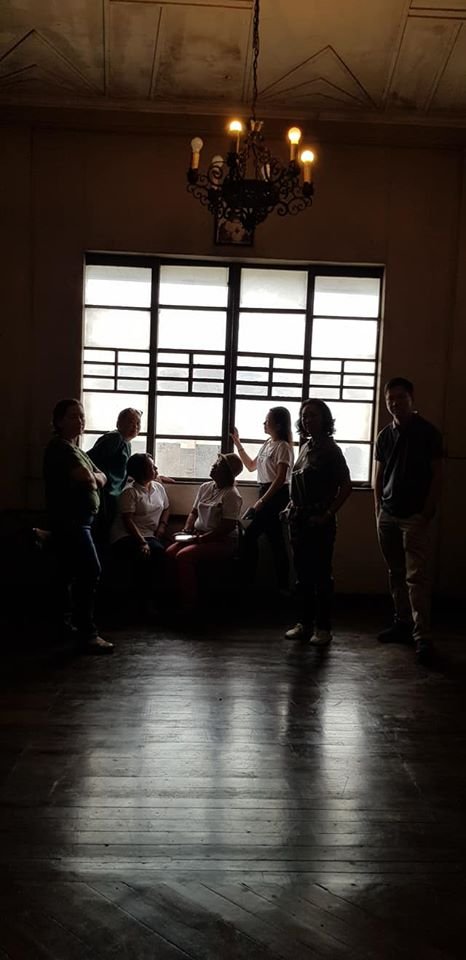One of my favorite buildings in Downtown Bacolod is the La Purissima Concepcion along Locsin-Cuadra Streets (or Cuadra-Locsin, if you prefer). It is with good reason for a heritage-lover like me to want this building preserved for the future. The La Purissima is the only pre-war survivor of the Big Fire of 1955 that gutted most of Downtown Bacolod.
Built in 1936, the La Purissima was constructed as a commercial building and was rented out to the Miraflor couple who ran it as the Miramar Hotel. At that time, there were not many two-storey commercial buildings and the La Purissima was the tallest in the area. Also, the current generation will not remember at all that the sea was just beside the Bacolod Public Plaza. One can see the Guimaras Strait from Downtown unlike now that one needs to go farther and traverse the reclaimed area to see the sea. From the second floor of the Miramar Hotel, the view must have been breathtaking. “Miramar” means “Look at the sea!” (mira (Sp.) look; mar (Sp.) sea). The serene blueness of the sea was gently complemented by the un-crowded public plaza, and the gentility of the city center further enhanced by the sea wall and the University Club jutting out onto the water.

IF THESE WALLS COULD TALK, the conversations, the secrets and the chismis would have been very, very interesting and scandalous. One might smirk at the implication – secrets, scandals and all – considering that hotels, motels and inns unwittingly house (cough, cough) “covert operations”. Oh, ye of dirty minds! The Miramar was occupied by the Japanese forces during the Second World War and was converted into their military offices. The configuration of the edifice was perfect for their needs – the height, the L-shape, and the sparseness of design. As a product of the 1930’s, the Art Deco Movement was still in force, thus, the building was designed along the simplified lines of that architectural era. Imagine the staccato of military boots thumping on the wooden staircase, the guttural exchanges of the members of the Japanese Imperial Army, and their slit-eyed faces peering through the wooden sliding windows.

Wood is what makes the building attractive. The tongue-in-groove planks that make up the walls, the floorboards smoothened by decades of wear, the staircase, and the ventilations are done in simpler fashion than other 1930’s structures. Understandably constructed for an enterprise rather than as a residence, the La Purissima proves that the sense of aesthetics before the war was such that even spaces not requiring embellishment are, nevertheless, thoughtfully designed. The forests of Negros yielded more timber then, hence, our houses and buildings afforded more wood for these structures.


Fortunately, the Americans took over the building during liberation and for a while the La Purissima house their headquarters. Happy days came again when La Purissima operated anew as Miramar Hotel from 1946 to 1955. Thereafter, the owners rented out the property to other business owners. This year, La Purissima Concepcion Building had a new owner and, hopefully, this heritage gem will continue to shine as a cultural gift to the common people of Bacolod and to whoever fix their loving and admiring gazes at this perfectly-preserved souvenir from the past.

